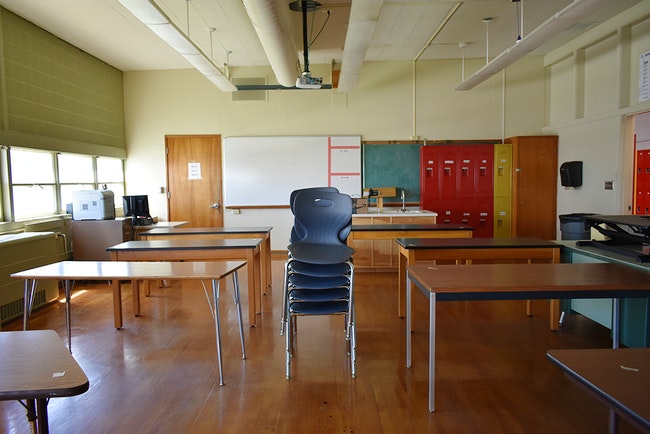A new analysis of data from Oregon schools during the 2021-22 school year shows statewide school staffing levels are rebounding from pandemic declines, but on-time graduation rates have dropped and chronic absenteeism remains a problem. (Rachel Parsons/Malheur Enterprise)
Oregon school finances have not been in greater jeopardy for decades.
Large Oregon school districts are cutting millions of dollars from their budgets, which translates into significant cuts in personnel and larger class sizes, as state funding has failed to keep pace with inflation and expanding expectations.
The problem isn’t limited to large school districts. Medium and small districts face the same financial stress. More school districts will face the dual threat of teacher strikes and deep personnel cuts as they enter collective bargaining this year.
The challenge faced by public education runs deeper than budgets. Schools have inherited a new generation of students and, along with them, a new paradigm for education.
Students in K-12 school classrooms today are demonstrably different than their counterparts just 20 years ago (Facebook was founded in 2004). Educating these students requires different teaching methods, updated classrooms and a wider array of support. It also requires a different approach to school funding that recognizes new demands on students, teachers and support staff.
Today’s students are internet natives, have experience with online learning, depend on school-prepared meals and fear college student debt. Classrooms are impacted by aging infrastructure, overflowing classrooms, lack of connectivity, increasing student diversity, chronic absenteeism and the threat of school shootings. More students face mental health issues, increasing demand for school nurses, counselors and social-emotional teaching techniques.
Teachers, many of whom are parents of school-age children, share the trauma. They are on the front lines of teaching students who need individual instruction. They manage in classrooms that lack adequate heating and cooling. They struggle to keep up to date on digital trends and educational innovation. Burnout is an occupational hazard. Good teachers leave because they earn more in other occupations.
Funding schools based on enrollment doesn’t capture the complexity of educating and preparing today’s K-12 students in the face of rapidly changing job markets. Head counts don’t capture the dimensions of pandemic learning loss, unequal digital resources, special education needs and emotional stress that are the everyday stuff of today’s K-12 classrooms.
Declining public school enrollments, resulting from low birth rates and flight to private schools by those who can afford it have resulted in funding reductions and will force closure of neighborhood schools, as parents in Seattle Public Schools are discovering.
We must find the right school funding formula. The one we have doesn’t work anymore because it doesn’t reflect demands schools are expected to meet every day and the individualized education students deserve.
Oregon lawmakers have tried to reconcile funding with emerging educational needs. But the result has been a hodgepodge of grants and directed spending that has been tacked on to a school funding formula designed to ensure equity among school districts after passage of major property tax limitations in the 1990s.
Finger-pointing is unproductive. We need an informed effort to rethink how schools are funded in light of current-day expectations. Just as important, we need to see school funding reform as critical to restoring public and parental trust in our schools.
There is no time to waste. The 2025 Oregon Legislature reconvenes in six months.
The post Oregon school finances in jeopardy, with districts facing layoffs, larger class sizes appeared first on Oregon Capital Chronicle.

